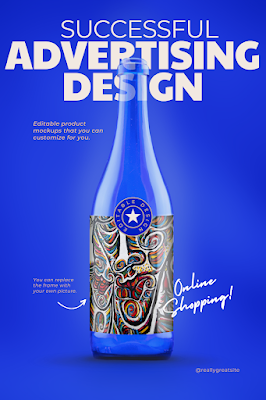In the vast landscape of marketing, the art of advertising design transcends mere aesthetics; it becomes a strategic endeavor rooted deeply in the understanding of consumer behavior. To truly grasp the essence of successful advertising design, one must delve into the intricate realm of consumer psychology. It is within this realm that the key to captivating an audience lies. So, what exactly drives consumers to engage with an advertisement? Let us embark on an extensive exploration of the psychology behind successful advertising design, unraveling its mysteries and implications.
Understanding the Power of Visuals
At the heart of successful advertising design lies the power of visuals. Humans are inherently visual beings, with our brains processing visual information much faster than text. This innate predisposition towards visual stimuli makes visual elements indispensable in advertising design. From captivating graphics to vibrant colors and striking imagery, visuals serve as the initial hook, drawing consumers in within mere seconds. The ability to capture attention through compelling visuals lays the foundation for deeper engagement with the advertisement.
Embracing Emotional Appeal
Emotions wield immense influence in decision-making processes. Successful advertising design harnesses the potency of emotional appeal to forge connections with consumers. Whether through humor, nostalgia, or empathy, advertisements that evoke emotional responses resonate more deeply with their audience. By creating an emotional bond with consumers, brands can cultivate long-lasting relationships and foster brand loyalty.
Unveiling the Influence of Color
Color psychology serves as a potent tool in the arsenal of advertising design. Different colors evoke distinct emotions and associations among consumers. For instance, red symbolizes energy and excitement, while blue conveys trust and reliability. Understanding the psychological impact of colors enables designers to strategically evoke desired responses from their target audience, enhancing the effectiveness of the advertisement.
The Paramountcy of Consistency
Consistency is the cornerstone of effective branding. A cohesive {brand identity} across all advertising channels reinforces brand recognition and trust among consumers. From logo design to typography, maintaining consistency in brand elements fosters familiarity and memorability, making the brand more resonate with consumers. Consistency in advertising design serves as a beacon of reliability, anchoring the brand's message in the minds of consumers.
Harnessing the Scarcity Principle
The scarcity principle capitalizes on the innate fear of missing out (FOMO) within consumers. Limited-time offers or exclusive deals create a sense of urgency, compelling consumers to take immediate action. Integrating scarcity tactics into advertising design can induce a sense of urgency, driving conversions and sales. By leveraging the scarcity principle, brands can instill a sense of value and desirability in their offerings, motivating consumers to act swiftly.
Embracing the Power of Social Proof
Humans are inherently social creatures, prone to seeking validation from others in decision-making processes. Social proof, in the form of customer testimonials or user-generated content, serves as a powerful tool in advertising design. By showcasing the positive experiences of others, brands can build trust and credibility among consumers. Incorporating social proof into advertising design validates the brand's claims and fosters a sense of reassurance among potential customers.
The Art of Storytelling
Storytelling transcends cultures and generations, serving as a timeless technique in communication. Compelling narratives have the power to captivate audiences, drawing them into the brand's narrative world. By weaving a story into advertising design, brands can evoke emotions and create memorable experiences for consumers. Effective storytelling humanizes the brand, making it more relatable and engaging to its audience.
Conclusion: Navigating the Depths of Consumer Psychology
In conclusion, successful advertising design is a multifaceted endeavor that delves deep into the intricacies of consumer psychology. By understanding the drivers behind consumer behavior, brands can craft advertisements that resonate with their target audience on a profound level. From the strategic use of visuals and colors to the incorporation of emotional appeal and social proof, every element of advertising design plays a crucial role in capturing the hearts and minds of consumers.
For further insights into effective advertising design, we invite you to explore 10 Essential Principles for Effective Advertising Design.
Do you have any questions or insights to share? We welcome your thoughts in the comments section below!



